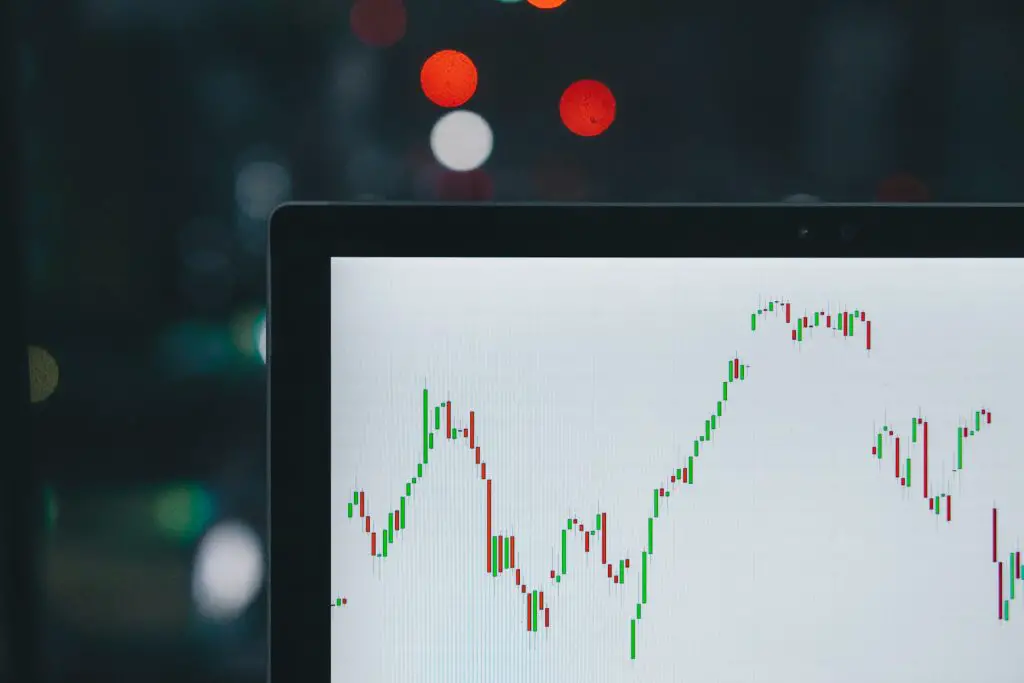One-minute scalping is a popular trading strategy among day traders and intraday traders. It involves making quick, short-term trades to profit from small price movements within a one-minute time frame. To effectively execute this strategy, traders often rely on technical indicators, with moving averages being a fundamental tool in their arsenal. However, determining the best moving average for 1-minute scalping can be challenging due to the plethora of options available. In this article, we will explore the concept of moving averages, their significance in 1-minute scalping, and identify the most suitable moving averages for this high-speed trading strategy.
Understanding Moving Averages
Moving averages are a widely used technical indicator in the world of trading. They are designed to smooth out price data and create a single flowing line on a chart. Moving averages help traders identify the direction of the trend, potential support and resistance levels, and points of entry and exit.
There are several types of moving averages, but the three most commonly used ones are:
Simple Moving Average (SMA): SMA calculates the average price of an asset over a specified number of periods by summing up the prices and dividing by the number of periods. It assigns equal weight to all data points in the selected time frame.
Exponential Moving Average (EMA): EMA gives more weight to recent price data, making it more responsive to recent price changes compared to the SMA. This characteristic can be advantageous in fast-moving markets.
Weighted Moving Average (WMA): WMA assigns different weights to various price data points, with greater emphasis on recent prices. It offers a balance between the SMA and EMA.
Each of these moving averages has its own advantages and disadvantages, and the choice between them largely depends on the trader’s preferred strategy and trading style.
1-Minute Scalping and Moving Averages
One-minute scalping requires traders to make quick decisions and execute trades within a minute or less. Therefore, the choice of moving average becomes critical in this high-speed environment. The goal of scalping is to capture small price movements, often just a few pips or ticks, so a moving average that can swiftly adapt to price changes is essential.
Factors to Consider When Choosing a Moving Average for 1-Minute Scalping:
Responsiveness: In 1-minute scalping, the moving average must react quickly to price fluctuations. Traders need an indicator that can keep them updated on short-term trends and changes in market sentiment.
Lag: Lag is the delay between a price movement and the corresponding signal generated by the moving average. In scalping, minimizing lag is crucial to capitalize on rapid price changes.
Smoothness: While responsiveness is vital, excessive noise in the indicator can lead to false signals. The moving average should strike a balance between responsiveness and smoothness.
Reliability: The moving average should provide reliable signals that accurately represent the underlying market conditions.
With these factors in mind, let’s explore which moving averages are best suited for 1-minute scalping.
Exponential Moving Average (EMA)
The Exponential Moving Average (EMA) is often favored by 1-minute scalpers due to its responsiveness to recent price data. Unlike the SMA, which gives equal weight to all data points, the EMA assigns more weight to the most recent prices. This characteristic allows it to react quickly to price changes, making it a valuable tool for scalping.
Pros of using EMA for 1-minute scalping:
Quick response to price movements.
Reduced lag compared to SMA.
Effective in capturing short-term trends.
Provides reliable signals in fast-paced markets.
However, traders should be cautious of the EMA’s sensitivity, which can sometimes result in false signals during volatile market conditions. To mitigate this, it is advisable to combine the EMA with other technical indicators for confirmation.
Simple Moving Average (SMA)
While the SMA may not be as responsive as the EMA, it has its own set of advantages that can benefit 1-minute scalpers. The SMA smooths out price data over a specific time period, reducing noise and providing a clear trend direction.
Pros of using SMA for 1-minute scalping:
Reduced noise in the indicator.
Helps identify the overall trend direction.
Reliable support and resistance levels.
Suitable for traders who prefer a less responsive, more stable indicator.
Many traders combine both the EMA and SMA in their 1-minute scalping strategies. They use the EMA for quick entry and exit signals, while the SMA helps them identify the broader trend and potential support/resistance levels.
Simple Moving Average of the High and Low (HL-SMA)
One-minute scalpers may also consider using a variation of the SMA called the High-Low Simple Moving Average (HL-SMA). This moving average is calculated by taking the average of the high and low prices over a specific period.
Pros of using HL-SMA for 1-minute scalping:
Smoother curve compared to traditional SMAs.
Reduced noise in the indicator.
Highlights key price levels.
The HL-SMA can help traders identify significant price levels that may act as support or resistance. It is particularly useful when combined with other technical tools and can enhance a scalping strategy’s accuracy.
Adaptive Moving Average (AMA)
The Adaptive Moving Average (AMA) is a relatively newer entrant in the world of moving averages. It adjusts its sensitivity to market volatility, becoming more responsive during active market phases and less responsive during quieter periods.
Pros of using AMA for 1-minute scalping:
Automatically adapts to market conditions.
Minimizes lag during high volatility.
Helps filter out noise during low volatility.
The AMA can be a valuable addition to a 1-minute scalping strategy, as it addresses the challenge of varying market conditions. By dynamically adjusting its responsiveness, it can help traders stay ahead of price changes in fast-moving markets.
Hull Moving Average (HMA)
The Hull Moving Average (HMA) is another adaptive moving average that aims to reduce lag while maintaining smoothness. It combines the benefits of an EMA and an SMA to create a unique indicator that responds quickly to price changes.
Pros of using HMA for 1-minute scalping:
Reduced lag compared to traditional SMAs.
Smoother curve.
Quick response to price movements.
Suitable for capturing short-term trends.
The HMA is particularly useful for traders who want to minimize lag without sacrificing the reliability of their moving average signals. It can be effective in 1-minute scalping when used alongside other technical analysis tools.
Choosing the best moving average for 1-minute scalping is not a one-size-fits-all decision. Traders should consider their trading style, risk tolerance, and the specific market conditions they are trading in. While the Exponential Moving Average (EMA) is often preferred for its responsiveness, other moving averages like the Simple Moving Average (SMA), High-Low SMA (HL-SMA), Adaptive Moving Average (AMA), and Hull Moving Average (HMA) offer their unique advantages.
Ultimately, successful 1-minute scalping requires a combination of technical indicators, risk management, and a thorough understanding of the market. Traders should experiment with different moving averages and find the one that aligns best with their individual trading goals and preferences. Additionally, they should practice and refine their strategies through backtesting and real-time trading to develop the skill and intuition necessary for successful 1-minute scalping.
Tips for Effective 1-Minute Scalping Using Moving Averages
Now that we’ve discussed the various moving averages suitable for 1-minute scalping, let’s delve into some practical tips to help traders implement these indicators effectively in their trading strategies:
Combine Moving Averages: Consider using a combination of moving averages to balance responsiveness and reliability. For instance, use the EMA for entry and exit signals and the SMA to identify overall trend direction. This combination can provide a more comprehensive view of the market.
Use Multiple Timeframes: While 1-minute charts are essential for executing scalping trades, it’s beneficial to also analyze higher timeframes (e.g., 5-minute or 15-minute) to identify broader trends and potential support/resistance levels. This multi-timeframe analysis can enhance your decision-making process.
Confirm with Other Indicators: Moving averages should not be used in isolation. To increase the accuracy of your signals, combine them with other technical indicators such as RSI (Relative Strength Index), MACD (Moving Average Convergence Divergence), or Stochastic Oscillator. These indicators can provide additional confirmation for your trades.
Risk Management: Scalping can be highly volatile, so it’s crucial to implement effective risk management strategies. Set strict stop-loss and take-profit levels for each trade and adhere to them religiously. Only risk a small percentage of your trading capital on each trade to preserve your account.
Practice and Adapt: Scalping requires quick decision-making and execution. It’s essential to practice your strategy extensively on a demo account to build confidence and refine your approach. Be prepared to adapt to changing market conditions and adjust your moving average settings or strategy accordingly.
Avoid Overtrading: Overtrading is a common pitfall for scalpers. Stick to a predetermined number of trades per day and avoid chasing after every opportunity. Quality over quantity is key to long-term success in scalping.
Stay Informed: Keep an eye on economic events and news releases that can impact the market. Sudden news events can cause sharp price movements, and being aware of them can help you avoid unnecessary risks.
Monitor Market Volatility: Some scalping strategies work better in highly volatile markets, while others are more suitable for calmer periods. Adjust your strategy based on the prevailing market conditions.
Record and Analyze Trades: Maintain a trading journal to record your scalping trades. This journal should include entry and exit points, reasons for each trade, and the outcome. Regularly review your journal to identify areas for improvement.
Emotional Discipline: Scalping can be emotionally demanding due to the rapid pace of trading. Maintain discipline and control over your emotions. Avoid revenge trading, and don’t let fear or greed dictate your decisions.
One-minute scalping with moving averages can be a highly profitable trading strategy when executed with precision and discipline. Traders must carefully select the moving averages that align with their trading style and objectives. Whether you opt for the Exponential Moving Average (EMA) for its responsiveness, the Simple Moving Average (SMA) for its smoothness, or other variations like the High-Low SMA (HL-SMA), Adaptive Moving Average (AMA), or Hull Moving Average (HMA), your choice should be based on a thorough understanding of your preferred indicators’ characteristics.
Successful 1-minute scalping requires practice, patience, and constant learning. Traders should continuously refine their strategies, adapt to changing market conditions, and remain disciplined in their approach. It’s essential to remember that no single moving average or indicator guarantees success in scalping; it’s the combination of multiple factors, including risk management and emotional control, that leads to consistent profitability.







